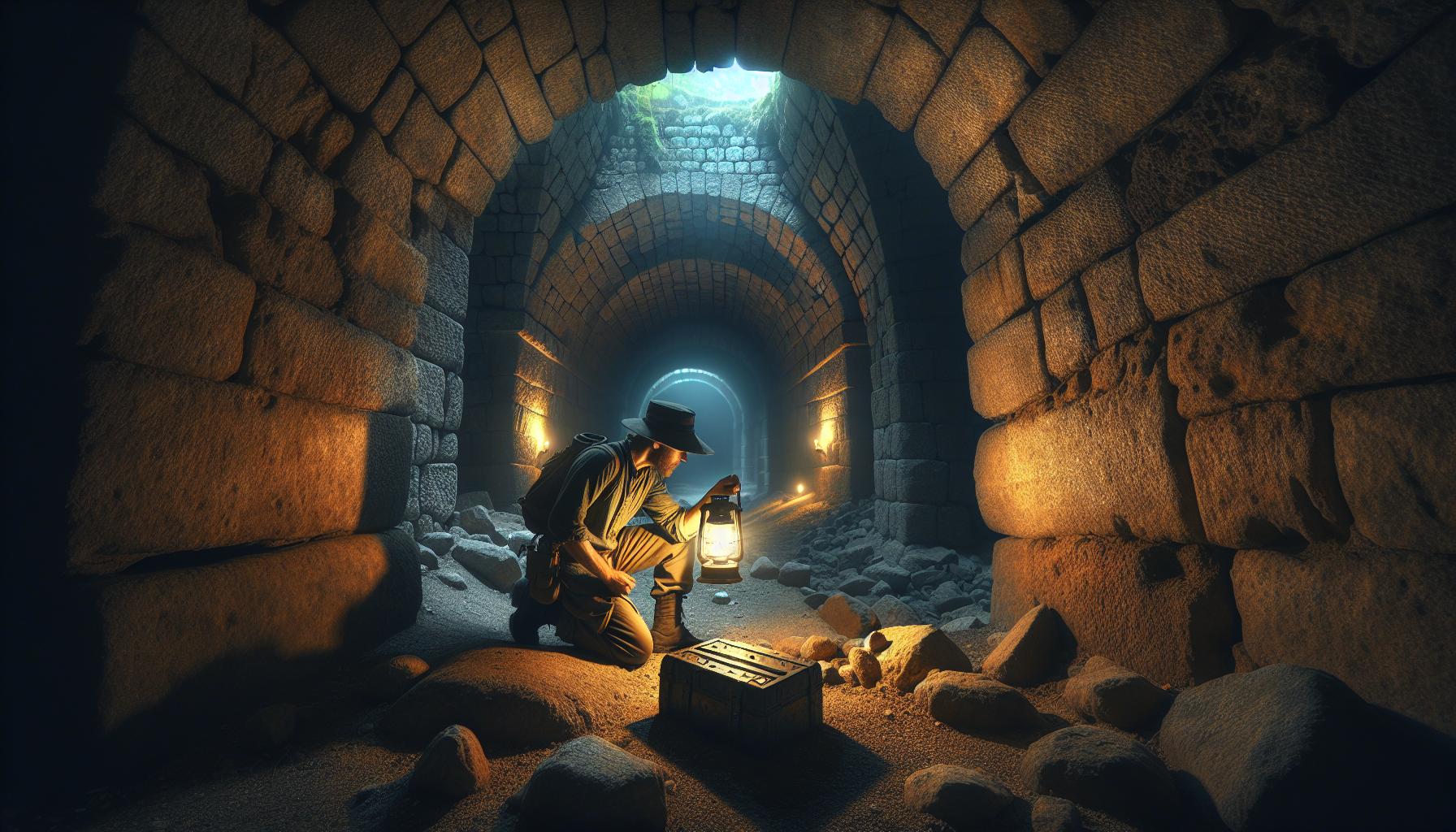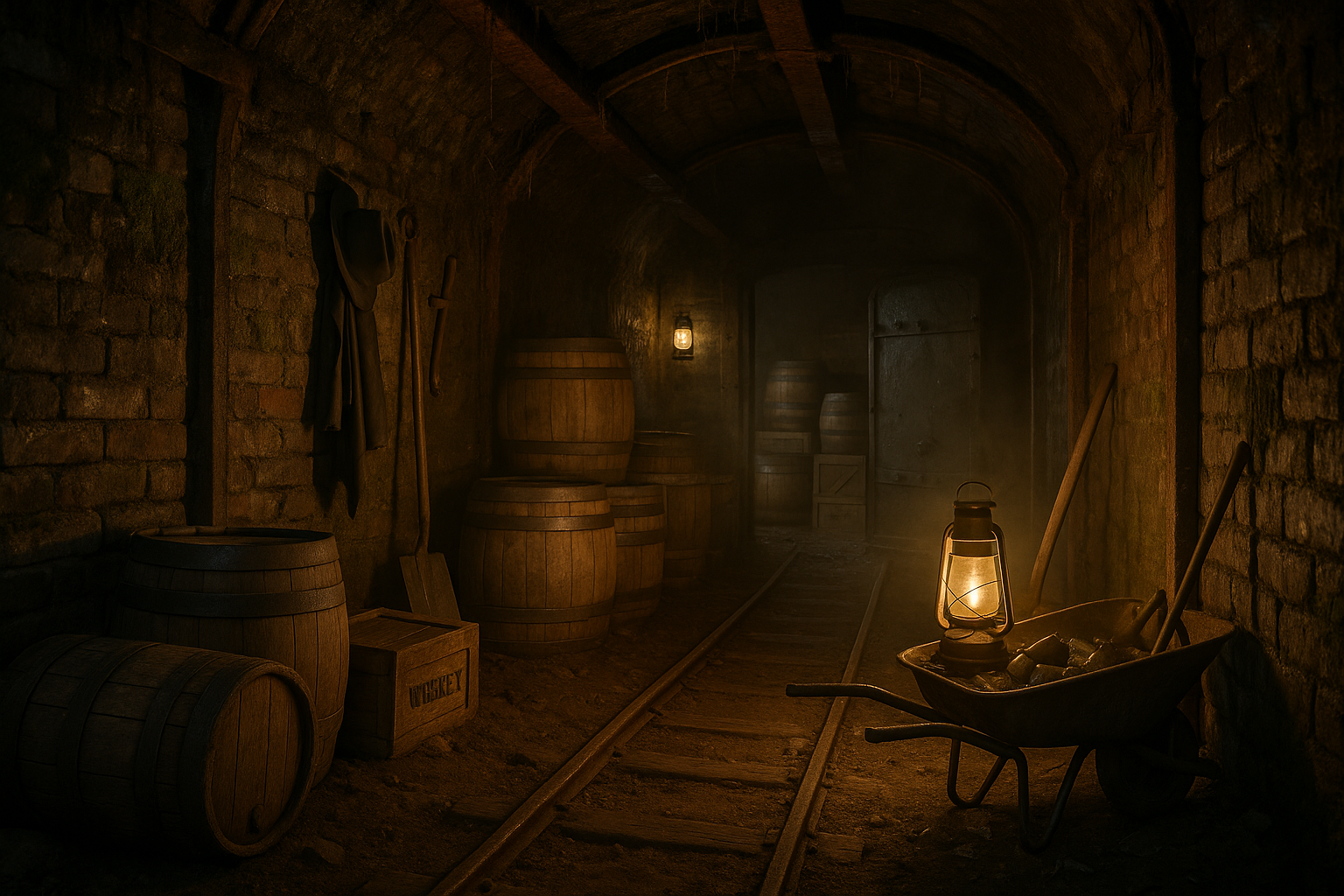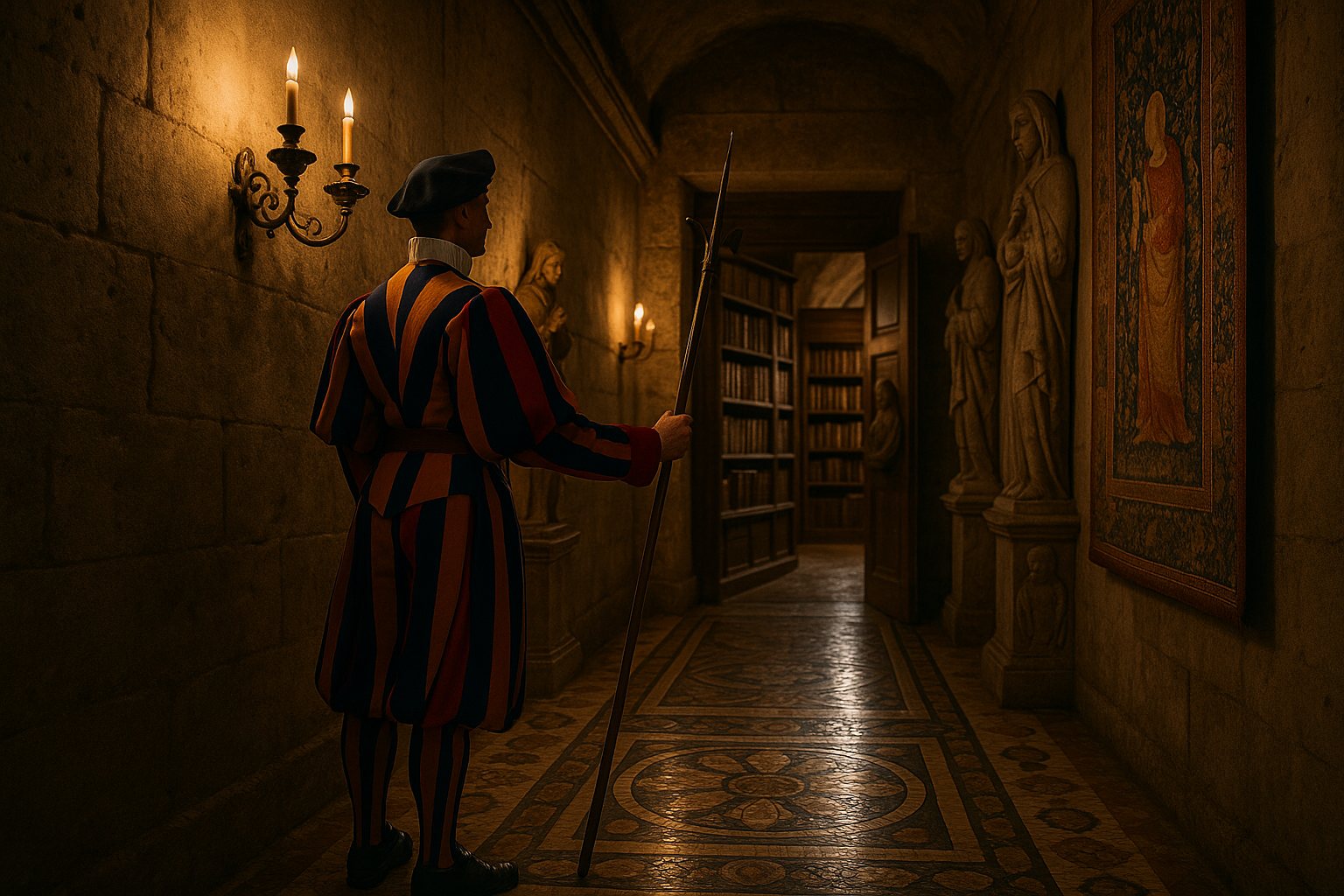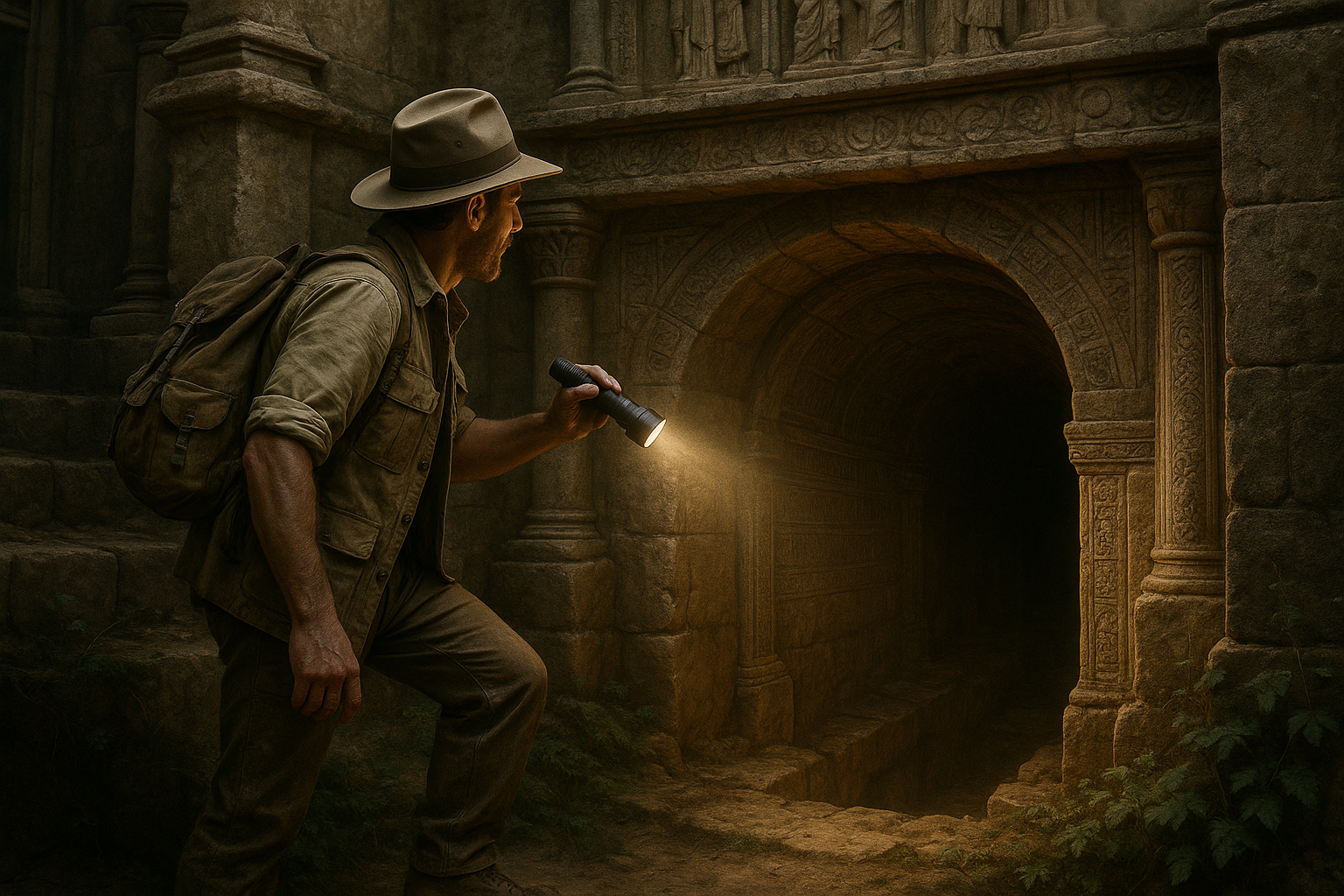Hidden beneath the surface of our bustling cities and serene countrysides lies a network of passageways shrouded in mystery and intrigue. These secret tunnels, often forgotten by time, hold stories untold and adventures waiting to be discovered. Welcome to the ultimate guide to detecting these hidden conduits, a journey that promises to ignite the imagination and perhaps even uncover a piece of history you never knew existed. Whether you’re an urban explorer, a history enthusiast, or just someone with a curious mind, this guide is designed to open your eyes to a world just beneath your feet.
Imagine walking down a familiar street, the sun casting long shadows on the pavement, and suddenly realizing that beneath your very steps lies a forgotten realm. Tunnels that were once vital for transportation, escape routes during wartime, or secret meeting spots for clandestine operations now lie silent, waiting to be brought back to life. The idea of uncovering these hidden passageways is not just about adventure; it’s about connecting with the past in a tangible way. As we peel back the layers of time, we gain insights into the ingenuity and resilience of those who came before us. 🕵️♂️
In this comprehensive guide, we will embark on a fascinating exploration of secret tunnels from around the world. Our journey will begin by understanding the history and purpose behind these subterranean structures. From ancient civilizations that used tunnels for religious rituals and burial practices to more modern uses during times of conflict and secrecy, each tunnel has a unique story to tell. We’ll delve into the architectural marvels that made these underground networks possible and examine the techniques used to construct them without the technology we rely on today.
But knowing where to find these hidden passageways is only half the battle. Once we’ve uncovered their locations, we’ll equip you with the tools and techniques needed to safely explore them. Safety is paramount, and our guide will cover everything from essential gear and preparation tips to understanding the potential hazards you might encounter underground. Whether you’re venturing into tunnels that are still structurally sound or ones that require extra caution, we’ll ensure you’re well-prepared for your expedition.
Finally, we’ll discuss the ethical considerations of exploring these hidden worlds. While the allure of discovery is strong, it’s crucial to approach these explorations with respect for history and the environment. We’ll explore best practices for responsible exploration and how to share your findings with the world without causing harm or disruption. By the end of this guide, you’ll not only have the knowledge to detect and explore secret tunnels but also the awareness to preserve their stories for future generations. Let’s embark on this captivating journey together, where every step could lead to a new discovery. 🌍
Understanding the Fascination with Secret Tunnels
The allure of secret tunnels has captured the imagination of historians, archaeologists, and adventure seekers for centuries. These underground passages, often hidden from plain sight, have been used for various purposes, from strategic military maneuvers to clandestine escape routes. The stories surrounding secret tunnels are as mysterious as the tunnels themselves, often involving tales of treasure, espionage, and historical intrigue. While some tunnels have been meticulously documented and preserved, many remain undiscovered, buried beneath layers of earth and history.
The fascination with secret tunnels is not just about the physical passageways themselves but also about the stories they tell. These tunnels are often shrouded in mystery, with legends passed down through generations. They are remnants of the past that connect us to the lives of those who came before us, offering a glimpse into the strategies and secrets that shaped historical events. As technology advances, our ability to detect and explore these hidden passageways has improved, making it possible to uncover secrets that have been hidden for centuries.
For those intrigued by the notion of secret tunnels, the journey of discovery is part of the thrill. Each tunnel unearthed adds a new chapter to our understanding of history, providing insights into the lives of those who built and used them. As you delve into the world of secret tunnels, prepare to embark on an adventure filled with mystery, excitement, and a touch of the unknown. Let’s explore the methods and technologies used to detect these hidden wonders and uncover their secrets.
Modern Technologies for Detecting Secret Tunnels
With the advancement of technology, detecting secret tunnels has become more efficient and less invasive. Various techniques are now employed to identify and map these underground passageways. Ground-penetrating radar (GPR) is one of the most popular methods used by archaeologists and researchers. GPR sends electromagnetic waves into the ground and measures the reflections from subsurface structures. This technique can detect anomalies that indicate the presence of tunnels, voids, or buried artifacts.
Another technology used in tunnel detection is seismic reflection. This method involves generating seismic waves on the surface and recording their reflections from underground structures. By analyzing the data, researchers can identify differences in material properties, which can indicate the presence of a tunnel. Seismic reflection is particularly useful in areas with complex geology, where other methods might struggle to provide clear results.
In addition to these methods, thermal imaging is also employed in tunnel detection. This technique measures temperature differences on the ground surface, which can indicate the presence of a tunnel beneath. Subterranean passages often have different thermal properties than the surrounding soil, allowing researchers to detect them through thermal anomalies. As technology continues to evolve, new methods and innovations will further enhance our ability to uncover hidden tunnels.
Historical Examples of Secret Tunnels
Throughout history, secret tunnels have played crucial roles in warfare, politics, and escape. One of the most famous examples is the Cu Chi Tunnels in Vietnam. These extensive networks of tunnels were used by the Viet Cong during the Vietnam War to transport supplies, house troops, and launch surprise attacks. The tunnels were equipped with living quarters, kitchens, and even hospitals, demonstrating the strategic importance of these hidden passageways.
Another historical example is the tunnel beneath the Temple Mount in Jerusalem. This ancient passageway, believed to have been built by King Solomon, was used for religious and administrative purposes. It is an architectural marvel that showcases the engineering prowess of ancient civilizations. The tunnel’s discovery has provided valuable insights into the history and culture of the region.
In Europe, the famous escape tunnel beneath the Berlin Wall was a symbol of hope for many East Berliners during the Cold War. This tunnel was used to facilitate the escape of numerous individuals seeking freedom in the West. The stories of courage and determination associated with this tunnel highlight the human spirit’s resilience in the face of adversity. These historical examples demonstrate the varied purposes and significance of secret tunnels throughout history.
Practical Steps to Detect Secret Tunnels in Your Area
If you’re intrigued by the idea of discovering secret tunnels in your area, there are practical steps you can take to begin your exploration. Start by researching the history of your location. Local libraries, historical societies, and online resources can provide valuable information about the area’s past and any known tunnels. Look for historical maps, documents, and eyewitness accounts that might offer clues to the existence of hidden passageways.
Once you’ve gathered some background information, consider reaching out to experts in the field. Archaeologists, historians, and geologists can offer guidance and advice on how to proceed with your search. They may also have access to advanced detection technologies that can assist in locating tunnels. Collaborating with professionals can increase your chances of success and ensure that your exploration is conducted safely and ethically.
Finally, if you’re ready to get hands-on, consider investing in or renting equipment like ground-penetrating radar or metal detectors. These tools can help you identify anomalies in the ground that could indicate the presence of a tunnel. Remember to follow local laws and regulations when conducting your search, and always prioritize safety. Exploring for secret tunnels can be an exciting and rewarding adventure, providing a unique connection to history and the mysteries of the past.
Comparative Analysis of Tunnel Detection Technologies
| Technology | Advantages | Disadvantages |
|---|---|---|
| Ground-Penetrating Radar (GPR) | Non-invasive, provides detailed subsurface images | Limited depth penetration, affected by soil conditions |
| Seismic Reflection | Effective in complex geology, can penetrate deep | Expensive, requires skilled operators |
| Thermal Imaging | Detects thermal anomalies, useful for shallow tunnels | Limited depth, affected by environmental conditions |
Fascinating Stories of Tunnel Discoveries
The discovery of secret tunnels often comes with fascinating stories that captivate the imagination. One such story is the accidental discovery of a hidden tunnel beneath a historic castle in Scotland. During renovations, workers stumbled upon a concealed passageway that dated back centuries. The tunnel, believed to have been used for smuggling or secret meetings, sparked a renewed interest in the castle’s history and led to further explorations.
In another remarkable discovery, a team of archaeologists in Egypt uncovered a network of tunnels beneath the ancient city of Alexandria. These tunnels were part of a larger underground complex that included catacombs, storage rooms, and escape routes. The discovery provided valuable insights into the city’s history and the engineering skills of its ancient inhabitants.
Such stories remind us of the hidden treasures that lie beneath our feet, waiting to be discovered. The thrill of uncovering a secret tunnel is matched only by the historical and cultural significance these passageways hold. As you embark on your own journey of discovery, keep an open mind and embrace the adventure that awaits.
For a visual exploration of this topic, check out this YouTube video: Secret Tunnel Exploration – The History Channel

Conclusion
Conclusion: Uncovering the Hidden World Beneath Us
In our exploration of secret tunnels and hidden passageways, we’ve journeyed through a fascinating intersection of history, technology, and intrigue. This guide has provided insights into the methods and tools used to detect these subterranean secrets, highlighting the ingenuity and dedication required to uncover them. From historical context to modern technological advancements, we’ve delved into how these mysterious pathways are discovered and the stories they hold.
To recap, we began by examining the historical significance of secret tunnels. Throughout history, these passageways have served various purposes, from military strategies to providing secretive means of escape or transport. Their presence in ancient cities and castles adds a layer of mystery to our historical understanding, inviting both scholars and enthusiasts to dig deeper into their past. 🏰
Our discussion then transitioned to the modern methods employed in detecting these underground routes. We explored the technological advancements that have revolutionized this field, such as ground-penetrating radar (GPR), seismic surveys, and the use of drones equipped with advanced sensors. These tools have significantly increased our ability to detect and map hidden tunnels without invasive digging, preserving the integrity of historical sites while unveiling their secrets.
Moreover, we highlighted the collaborative efforts of archaeologists, historians, and technologists in this quest. The synergy between these fields is crucial for piecing together the puzzle of underground passageways, ensuring that each discovery contributes to a broader understanding of human history and engineering. The interdisciplinary approach not only enhances the accuracy of findings but also enriches the narrative of our shared past.
The importance of detecting secret tunnels extends beyond historical curiosity. In modern times, these hidden structures can pose security risks, serving as conduits for smuggling or other illicit activities. By understanding and uncovering these passageways, authorities can mitigate potential threats, ensuring safer communities and preserving the integrity of national borders. 🛡️
Furthermore, the environmental and urban planning implications of tunnel detection are significant. As cities expand and infrastructure projects proliferate, knowing what lies beneath the surface becomes increasingly important. By identifying and mapping existing tunnels, engineers and planners can avoid costly disruptions and ensure the safety and stability of new constructions.
This guide also emphasized the role of public engagement and education in the field of tunnel detection. By fostering a sense of curiosity and wonder about what lies beneath, we can inspire a new generation of explorers and researchers. Encouraging public participation, whether through citizen science initiatives or educational programs, democratizes the discovery process and ensures that these hidden histories are accessible to all.
As we conclude this comprehensive guide, it’s essential to reflect on the broader implications of our findings. The hidden passageways beneath our feet are more than just physical structures; they are gateways to understanding the complexities of human endeavor and survival. Each tunnel tells a story, a narrative woven into the fabric of time, waiting to be uncovered and shared.
We invite you, dear reader, to continue this journey of discovery. Whether you are an academic, a hobbyist, or someone with a burgeoning interest in history and technology, there are countless opportunities to explore and contribute to this field. Consider joining local archaeological societies, participating in online forums, or even starting your own research project.
Sharing knowledge and experiences can significantly enhance our collective understanding. We encourage you to comment on this article, share your insights or personal experiences with tunnel detection, and engage with a community of like-minded individuals. By doing so, you not only enrich the conversation but also inspire others to embark on their own explorations.
In conclusion, the exploration of secret tunnels is more than a technical endeavor; it is a journey into the heart of human innovation and resilience. These hidden passageways, shrouded in mystery, invite us to ponder the capabilities and aspirations of those who came before us. As we continue to uncover these secrets, we not only reveal the past but also illuminate the path forward, bridging history with the future.
Let us remain curious and open to the wonders that lie beneath us. Share this guide with others who might find inspiration in these hidden corridors, and together, let’s explore the depths of our shared heritage. 🌍🔍
For further reading and to dive deeper into the technology and history of tunnel detection, visit these reliable sources: National Geographic, Smithsonian Magazine, and Archaeology Magazine. These platforms offer a wealth of information and ongoing updates in the field, providing a continuous stream of knowledge for those eager to learn more.
Toni Santos is a visual storyteller and artisan whose work explores the quiet power of what lies beneath. With a deep fascination for subterranean and hidden architecture, Toni uncovers the layers, voids, and forgotten spaces that shape our built environment from the shadows.
His art is a journey through the unseen — from ancient underground chambers to sealed passageways, service tunnels, and foundations buried in time. Each creation tells a story of silence, secrecy, and structure — revealing how absence and concealment can be just as meaningful as what’s visible above ground.
Whether working through visual compositions, architectural studies, or symbolic handcrafted pieces, Toni captures the soul of hidden spaces. His work bridges art and archaeology, blending design with discovery. Trained in visual design and traditional techniques, Toni creates with intention. His pieces don’t just depict — they interpret, inviting viewers to rethink what space, memory, and architecture mean when they’re hidden from view.
As the creative force behind Vizevex, Toni shares this perspective through curated visual narratives, symbolic collections, and interpretive essays that give voice to the quiet geometries beneath our feet.
His work is a tribute to:
The mystery of spaces built to be forgotten
The symbolism embedded in foundations, voids, and passageways
The timeless connection between human intention and hidden structure
Whether you’re an artist, an urban explorer, or someone fascinated by the unseen frameworks that support our world, Toni invites you into a realm where architecture becomes myth — one corridor, one layer, one buried story at a time.





